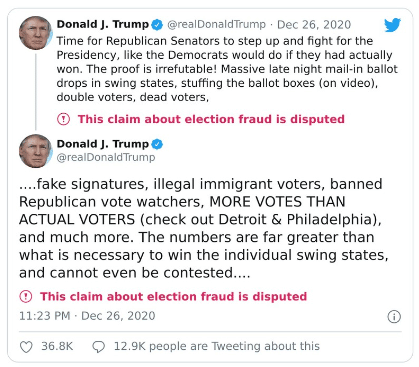Telltale Blogs
January 2023
What is the Great Replacement Theory and why is it relevant to understand now? by Josephine Platt
Telltale’s latest research commission is building an in-depth understanding of those who believe in the ideas underpinned by the Great Replacement Theory – specifically where it bridges with pseudoscience.
“One of the things that makes it so insidious is that it’s a mainstream concept ” – Dr Pasha Dashtgard
The Great Replacement Theory lies on a historical foundation of eugenics, racism and immigration related conflicts in the United States and Europe. It is a disparate topic with an old historic base, stretching back to 1918 with ‘The Decline of the West’ by Oswald Spengler. “The phrase itself, ‘Grand Remplacement’, was coined in 2011 by Renaud Camus, a French white supremacist,” explains Dr Gavin Evans, a lecturer of journalism and media theory at Birkbeck University. “But the idea goes way back: you can see it in Fitzgerald’s The Great Gatsby from 1925, where it’s said that if we don’t look out, the white race will be utterly submerged.”
Dr Pasha Dashtgard, Director of Research for the Polarization and Extremism Research Innovation Lab (PERIL), explains that the Great Replacement Theory is a throughline into white and male supremacy. “It is a fundamental component of the alt-right, extremist right-wing worldview and ideology,” he says. The theory is proliferated by the likes of Donald Trump, Suella Braverman and Tucker Carlson. While the former president Tweeted lies about “illegal immigrant voters” at the time of the US 2020 elections and, as Dr Evans notes, has retweeted thoughts from “actual fascists” who talk about white genocide, the UK’s Home Secretary was criticised by the Board of Deputies of British Jews for referencing the term ‘cultural Marixsm’ in a speech, which is a term linked to antisemitism and the far-right. Meanwhile, the American television host has been called out for specifically repeating the ‘great replacement’.

The Great Replacement Theory is having a revival in both America and with the European far-right Identitarian movement – with Camus an expression of the latter – and Dr Evans sees a blending of the two. “The alt-right in America and Europe’s Identitarian movement insist on breaking bread with each other, and they influence each other,” he explains. “Everything in America revolves around race because of its past, while the Identitarian movement is less overtly racist, and instead talks about ethnic culture and wanting separate cultures. The phrase ‘great replacement’ found its way to America and some of the race stuff found its way to the Identitarian movement.”
The Great Replacement Theory has been associated with violent acts across the world in recent years, including a 2011 bombing in Oslo, Norway and a 2019 shooting at a mosque in Christchurch, New Zealand. But what is at the core of this theory, and who is susceptible to following it?
Dr Dashtgard acknowledges that The Great Replacement Theory is both anti-Semitic and Islamaphobic, and that the target of concern changes based on demographic and geography. For example, while the target might be Mexicans in Southern California, it becomes Black people in Northeastern America and Muslims in the Netherlands.
He explains the Great Replacement Theory is anti-immigrant on a micro-level, but anti-Semitic on a macro-level. “Anti-Semitism is a through line in almost every ring-wing conspiracy theory because you need a spectre of powerful cabals,” he says. “The Jews are described as the ‘core of the onion’, but white supremacist recruiters tell one other not to start with anti-Semitism as it’s too extreme. Instead, they pull people in and eventually get to that core. For instance, you wouldn’t hear Tucker Carlson talking about the Jews, but when he talks about the liberal elite, that’s who he’s talking about. They will overtly attack woke, cancel culture, university or Ivy League professors, but all of that is code for Jews.”

Dr Dashtgard tells us that the two major themes of the Great Replacement Theory are an incompatibility of non-Western immigrants with Western values, and the demographic fears that are tied to invasion, birth rates, and the idea that white people and white cultures are being replaced. The theory melds Christian nationalism with white supremacist views of politics, and male supremacist views of women as brood-bearers for the white ethno-state. “The Great Replacement Theory narratives really focus on family, including protecting white women and weaponising children against the overt concern of being replaced,” says Dashtgard. “Christian nationalists believe that one of the ways to combat the liberal takeover is through having big families. In other words, the more of you there are, the more likely you are to have power.” This also rings true with white supremacists; their popular ‘Fourteen Words’ slogan reads: “We must secure the existence of our people and a future for white children.”
Widely, persons who support the Great Replacement Theory believe they are under threat and siege by non-western and non-white people. “One of the features of the Great Replacement Theory that makes it motivating for violence is the sense of urgency that comes from the theory,” says Dr Dashtgard. “It’s not an abstract, existential threat; it is a belief that it’s happening right now. For example, there is the belief that by 2030, the majority of white people in America will be the minority majority.”
Dr Dashtgard explains that white people start to feel threatened when they are reminded of their demographic size changes, and it leads to actual prejudice and discrimination. “What happens is that when a white supremacist starts talking about birth rates and immigration, all of that creates a perceived threat,” he says. “It makes people more likely to support racist policies, and to discriminate against minorities.”
Furthermore, Dr Joe Mulhall of UK-based advocacy group Hope Not Hate, which campaigns against racism and facism, explains that one of the issues with the Identitarian movement is that a conscious veneer and lexicon has been manufactured by those involved. “‘Ethno-pluralism’ is specifically used so they don’t have to use terms like ‘racial difference’ or ‘racial separatism’,” he says. “The movements that are much more into the Great Replacement Theory in a fundamental and ideological sense have created a language designed to present.”
Nonetheless, Dr Mulhall emphasises that the Great Replacement Theory is a spreading and growing theory. Andrew Tate, Neil Oliver and Laurence Fox are among the figures behind its propagation online. Moreover, far-right groups have been highlighted as exploiting formats often used in youth culture, such as memes and humorising racist content, in order to attract young audiences to engage with their content. “A huge amount of European figures that we monitor are consuming North American content where this just seems to be really normal – literally on television,” he says. “In the UK, we’re concerned about how close some of the GB News content is to the Great Replacement Theory, without explicitly using the term. Nigel Farage saying things like “what do you want your country to look like in fifty years?” plays into some of those narratives.”

Dr Mulhall tells us, more formalised ideological boxes are breaking down, due to the ways in which individuals consume content online now. He calls it a ‘grab bag’ approach. “Someone could consume progressive content, such as trans-rights issues, but they might simultaneously consume content that says women should be owned and live in the kitchen, or they could consume misogynistic content and say they hate feminism while also hating racism,” he explains. “With young people at the moment it’s much harder to say this group of people believe this so they believe that.”
Through conducting a nationally representative survey of over 1,500 participants followed by a series of ethnographic interviews, our research seeks to build an in-depth understanding of those who are likely to subscribe to these ideas, with a particular focus on the pseudoscientific aspects of the Great Replacement Theory.